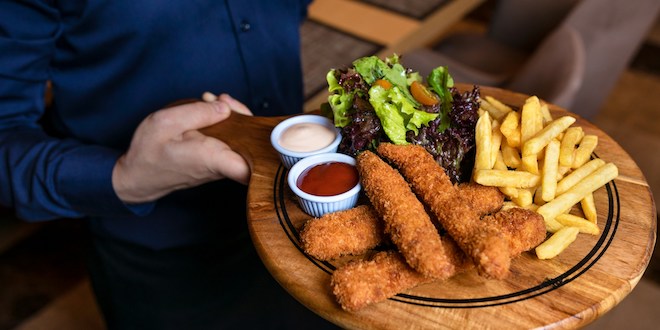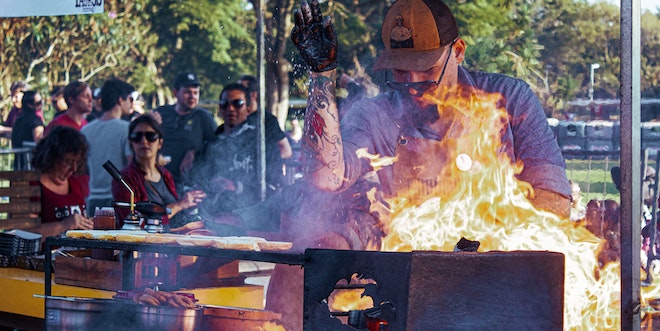10 Financial Tips for Opening a Chicken Restaurant
Last Updated on December 19, 2023
Embarking on the journey of opening a chicken restaurant intertwines the art of culinary mastery with the science of financial acumen. For those captivated by the allure of golden, crispy chicken and dreaming of diving into the realm of fried chicken franchises, the path ahead is not just seasoned with spices but also with fiscal wisdom.
This venture isn’t merely about crafting mouth-watering dishes; it’s equally about navigating the complex currents of financial management with precision and foresight.
1. Draft a Solid Business Plan
Your first step is to create a robust business plan, a blueprint that outlines your journey from concept to reality. This document should encapsulate everything from your unique selling proposition and target market analysis to detailed financial projections. A well-crafted plan doesn’t just guide your venture; it also attracts potential investors and lenders.
2. Assess Startup Costs Realistically
One of the biggest pitfalls in starting a restaurant is underestimating the initial investment. Detail every expense, no matter how small. This includes kitchen equipment, interior design, initial inventory, staff uniforms, marketing costs, and licensing fees. Accurately estimating these costs will help you secure adequate funding and avoid unwelcome financial surprises.
3. Explore Funding Options
Securing capital is the next significant hurdle. Personal savings may not suffice, so explore other avenues like small business loans, angel investors, government grants, or crowdfunding. Each option comes with unique advantages and limitations. For instance, while investors can offer valuable advice and networking opportunities, they also require a share in your business.
4. Smart Budgeting for Operations
Effective budgeting is crucial for the smooth operation of your restaurant. This budget should cover everything from ingredient purchases to utility bills. Regularly reviewing and adjusting the budget based on your operational needs will help maintain a healthy financial balance.
5. Pricing Your Menu Right
Setting the right price for your menu items is a delicate balance. It requires a thorough understanding of the cost of ingredients, labor, and overheads and an awareness of market pricing. Your pricing strategy should reflect the value you offer while ensuring profitability.
6. Manage Inventory Efficiently
Efficient inventory management can significantly reduce waste and cut costs. Implement a system that tracks stock levels, monitors usage, and optimizes reorder quantities. This proactive approach will ensure you have enough inventory, minimizing spoilage and over-purchasing.
7. Understand Tax Obligations
Navigating the maze of tax regulations is crucial. Mismanagement here can lead to hefty fines and legal issues. Understand your obligations regarding sales, payroll, and other relevant taxes. Consulting with a tax professional can help you take advantage of applicable tax benefits.
8. Monitor Cash Flow Closely
Cash flow management is about understanding the timing of your inflows and outflows. Regular monitoring helps identify periods of tight cash flow, allowing you to make informed decisions, such as delaying non-essential purchases or negotiating extended payment terms with vendors.
9. Embrace Technology for Financial Management
In the digital age, leveraging technology for financial management is a must. Tools like cloud-based accounting software and advanced POS systems can provide real-time financial data, automate processes, and reduce the risk of human error, freeing up your time to focus on your business’s culinary and customer service aspects.
10. Plan for the Future
Future planning is essential in the dynamic world of the restaurant business. Set aside a contingency fund for emergencies and unexpected expenses. Also, keep an eye on expansion opportunities. Whether adding a new dish to the menu, renovating your space, or considering fried chicken franchise opportunities, having a strategic growth plan is crucial.
Conclusion
The journey of opening and running a successful restaurant is as much about financial savvy as it is about culinary excellence. It demands a keen understanding of numbers, a meticulous approach to planning, and a vigilant eye on the market.
As you delve into this exciting venture, embrace the financial challenges with the same passion and commitment you apply to your chicken recipes. Remember, in the restaurant industry, success is measured by the flavor of your dishes and the robustness of your financial health.







